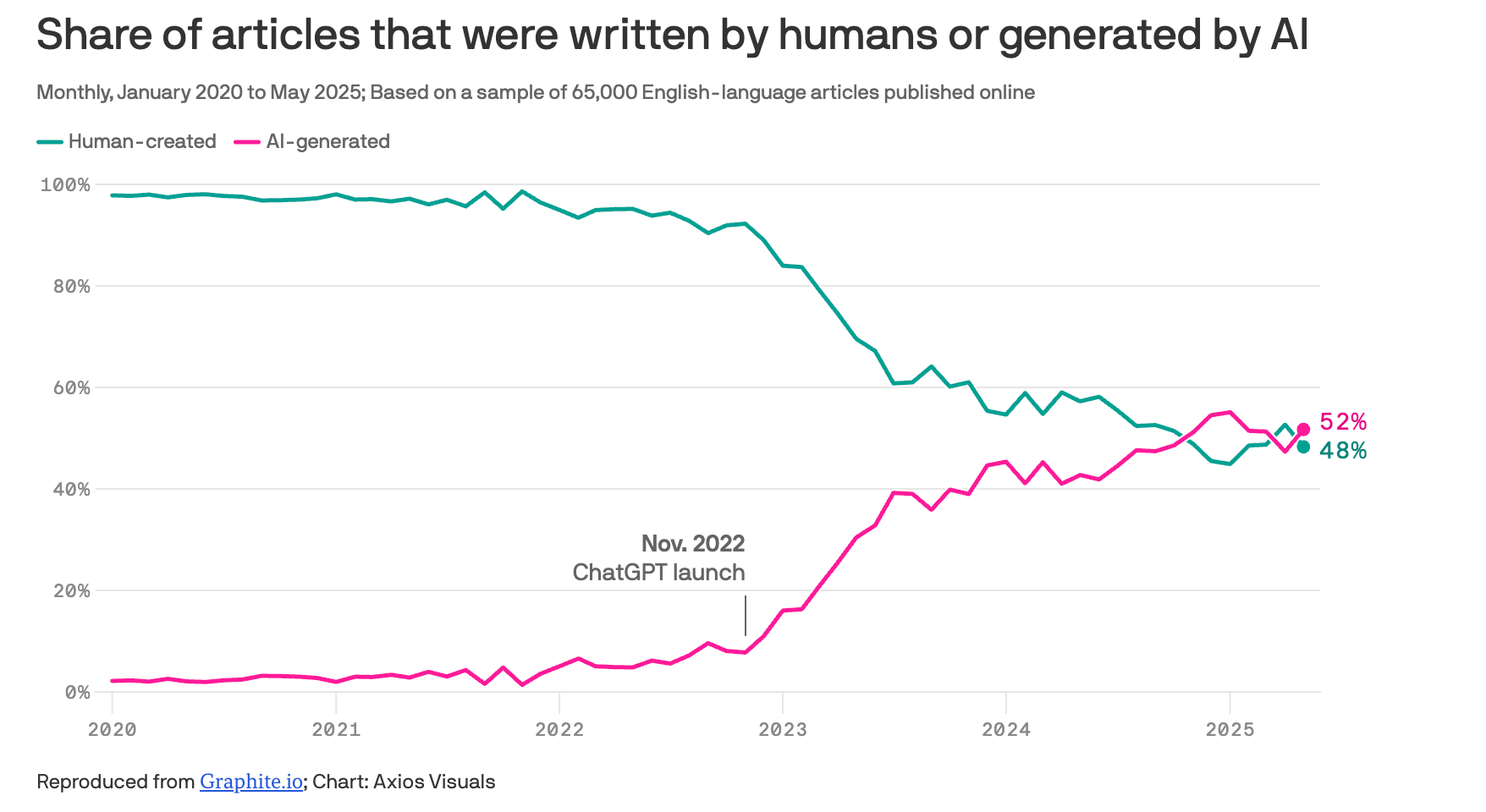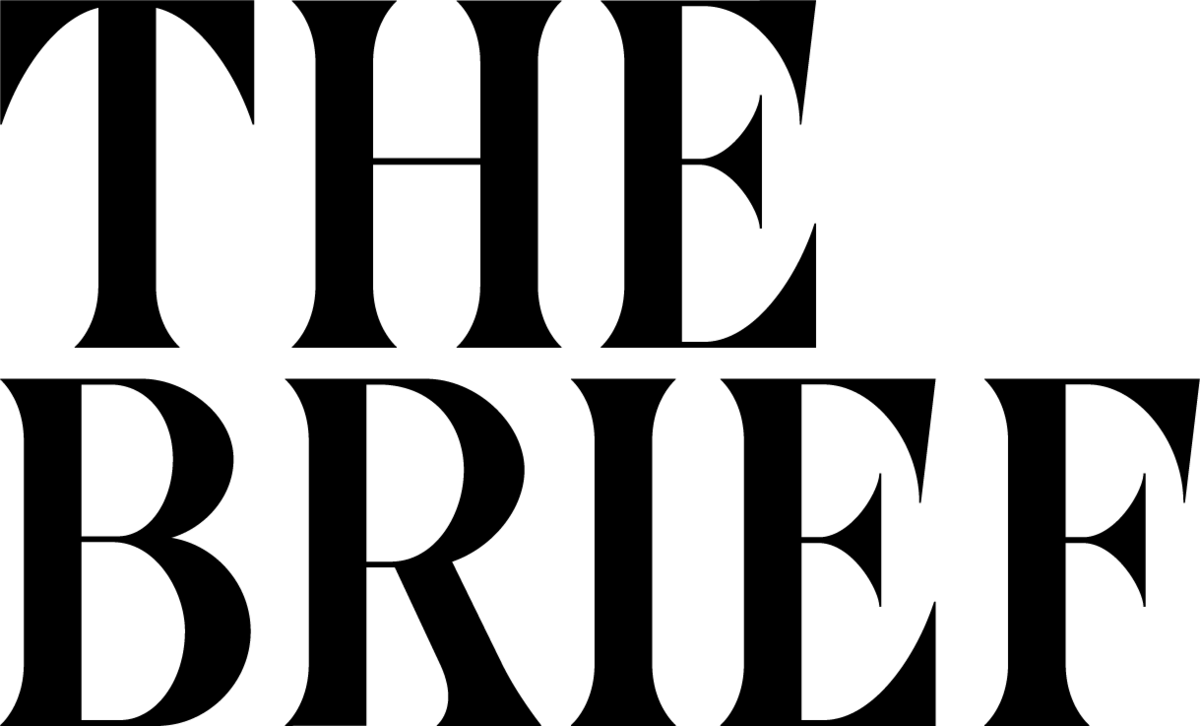
21,345 founders and comms leaders start their weekend with The Colab Brief.
Join them to receive weekly insights into the media, communications, and PR industry, written by journalists themselves.
📬 In this Edition
🔥 One Big Thing – What You Need to Know About “No Comment”
🎯 This Week’s Playbook – Gen Z Comms: Hold the Slang
📖 Required Reading – AI vs. Human-Created Articles + “Everyone Is Welcome Except I.C.E.”
💯 One Minute Masterclass – How Journalists Decide What to Write About
💪 The Inbox Power Index – Three Reporters Getting the Most PR Attention (and How to Stand Out)
📬 You Pitched What? – The Reporter Pitch Lab: Influencers Meet Soccer
🧞♂️ Reporter’s Wishlist – What Journalists Actually Want to See Pitched
🔁 Media Moves – Key Industry Shifts, Promotions, and Departures This Week
Have feedback for what you’d like to see? Hit us up. |
🔥 What You Need to Know About ‘No Comment’
Imagine that you’ve written a blog piece that’s just hit half a million views. In it, you’ve got some tough questions for the reading audience. You’d love feedback, and you’re looking for signs of critical discourse in the comment section. But when you check it out, the same message pops up ad nauseum.
Two words: “No comment.”
How would any of us make sense of this? I’d be frustrated as hell—and perhaps you’d be, too. Who isn’t every time those words without meaning leave the mouths of politicians, CEOs, and celebs? Imagine your sweetie saying it at some moment of truth. How many short inches are you from passive aggression or downright evasion?
A striking piece in Ragan PR Daily takes a closer look at the No Comment Conundrum, especially as it applies to crisis time. Understandably, the safest thing – at least at first blush – is to apply the “no comment” whitewash to wiggle out of a tight spot. But as author Courtney Blackann notes, it wasn’t the best of strategies when Los Angeles Mayor Karen Bass faced reporters during the 2024 Los Angeles wildfires.
With more than 100,000 people evacuated, tens of thousands of acres charred, and nagging questions about fire department cuts before the disaster, Bass’s “no comment” spoke volumes.
Here Blackann quotes Michele Ehrhart, chief marketing and communications officer at the University of Memphis. From my journalist’s perch, it’s a pure bullseye:
“The mayor could have said, ‘Thank you for understanding, I just landed. I’m meeting with my team and will have answers tomorrow.’ That would have shown leadership. Instead, she dodged them, and the narrative turned against her.”
I love Ehrhart’s proposed reply because in essence, it turns “no comment” into slow comment. Compare that to Bass, who slammed the door on journalistic inquiry and the valid concerns of her constituents. They lost big. She lost bigger.
Takeaway one: ‘Practice’
Unless you want to join that infamous group known as You Can Trust ’em as Far as You Can Throw ’em, think through how to deal with a crisis before it happens. Says Ehrhart: “Football players don’t just show up for the game. They practice.”
Had she handled Bass’s appearance, a different narrative would’ve emerged. Instead, reporters and constituents drew their own conclusions. Given that Bass had just returned from an overseas trip, it even gave the impression that she was more concerned with unpacking souvenir shop trinkets to dole out to her staff.
That’s the thing about “no comment”: It is a comment. Bass could’ve meant anything from “I can’t be bothered” to “I don’t owe you the dignity of a reply,” or worse. Of course, she didn’t. But there’s zero chance in today’s environment that a skeptic would read anything positive into it. That fact is all the more striking given a February Statista Consumer Insights survey: It reports that just 5 percent of U.S. respondents say they trust politicians.
Takeaway two: Grasp the ‘golden hour’
If you’re a media relations pro tasked with steering a company through a crisis, there’s something else to consider. Your client may be making their first statement or appearance in front of the media, as opposed to an executive or Hollywood type who faces the press repeatedly. The PR Daily piece points to a “golden hour” when the time is right to step up: It’s the short window between when an organization learns about a crisis and when they address it.
You may not have key information handy or still need to coalesce around a narrative. But once you let people know you’re aware of the concerns and hear them, you essentially buy time before you face a reckoning and offer up insights.
There’s also nothing wrong with hitting up your reporter network to take the temperature, as you’re not leveraging relationships in a dishonest way to tilt the press. Rather, you have much to gain from learning a journalist’s take on what concerns their fellow scribes and what they most want to know. When PR pros practice this with me, I’m happy to share what I’ve got. It keeps the relationship strong.
Some of my press colleagues may disagree, thinking that sharing such info equals an abdication of journalistic integrity. Yup. Some of them even call PR people “The Dark Side of the Force.”
You might be surprised to know that these are almost always the same piggy people who elbow you out of the way at a press conference when they roll out the free food and swag. Not even Darth Vader’s that rude.
Takeaway three: Be a calming, confident presence
A smart PR pro doesn’t leave a client’s side when they’re under the gun. Even if you’re just reassuring them that they’re not facing the media firing squad alone, you’ll exercise positive impact merely through presence.
But it’s also up to you to help them navigate the choppy seas so that their demeanor, actions, and words reflect character and concern. Put yourself in their place – literally – and imagine you’ve just been thrust into their role as chief executive of their company. Chances are, you’d know little if anything about how to do their job.
In like fashion, the client needs you to practice the art and science of PR through capable, competent leadership. That’s right: leadership. Before they can win (or win back) trust from the public, you will have to win their trust to do the job when anything but a puff press release is called for.
Once it’s mission accomplished, make sure to have this reply on hand when a competitor tries to pry away your secrets.
“No comment.”
Lou Carlozo is the Editor in Chief of Qwoted, the world's most widely used platform that unites journalists, PRs, sources and podcasters. He is a Pulitzer Prize finalist, a Polk Award Winner (both for team reporting) and the host of the Bankadelic podcast, ranked Number 3 for its coverage of AI and finance as ranked by Million Podcasts. Connect with him on LinkedIn.
🖊️ This Week’s Playbook: Gen Z Comms - Hold the Slang
As you might remember from my first Gen Z Comms lesson last week, I’ve covered that demographic for ADWEEK and Mashable, sifting through hundreds of pitches in the process. My top pet peeve is when a pitch uses the latest trendy online Gen Z slang in the subject line.
You might think yourself tapped into youth culture or that the expression will stand out in inboxes, but it irks me and will likely elicit eyerolls from reporters.
These subject lines can be confusing. When it comes to pitches, clarity is everything. The easier it is for a reporter to understand your pitch from the subject line, the easier you make their life — and the more likely I’ll take the pitch seriously. Sometimes I receive one that uses the latest TikTok viral slang to talk about something unrelated—and I have no idea what you’re talking about! It’s much more readable to skip the flair and cut to the chase.
📚 Required Reading
AI-generated vs. human-created articles
Like Alasdair reported last week, I’m glued to any reporting on AI and article generation. This week, Axios shared the findings of a new study from SEO firm Graphite that looked at the numbers: AI articles generated from 2020 to 2025 compared with human-created ones.

It’s a sobering graph. AI-generated articles briefly overtook human articles in November 2024 but today they are roughly equal.
A second Graphite report referenced in the article revealed that AI-generated content isn’t as prioritized as human content in search engines or chatbot responses.
Journalists and PR people should work hand in hand to champion human-created articles, especially given what we learned last week.
‘Everyone is welcome, except I.C.E.’
Chicago Tribune, Oct. 14, 2025
In Chicago, we’re in the thick of controversial I.C.E. deployments. The Tribune’s Zareen Syed shines light on a quiet form of resistance: signs in shop windows that declare “EVERYONE IS WELCOME HERE EXCEPT I.C.E.” Yet I would’ve missed a very unlikely, whimsical detail had she not highlighted it: a red line slashed through a grimacing alligator in a combat vest, a yellow butterfly perched joyously on its snout.
Comms pros will want to note how, even at a time of national unease, humor and puckishness matter. The media is increasingly looking for unusual artistic takes on the I.C.E. situation that lack contrivance or smugness. If you have a pitch where an artist has something to say or show that’s topical and avoids an angry us-versus-them framework, now’s the time to bring it on.
chicagotribune.com/2025/10/14/chicago-restaurants-ice-agents/ (behind a paywall)
⏰ One Minute Masterclass - How Journalists Choose What to Write
When Lizzy asked me to write a “day-in-the-life” piece, the timing was kind of funny. That same afternoon I’d met with an aspiring reporter I’m mentoring, and she’d asked me almost the exact same thing: What does your day actually look like?
Subscribe to our premium content to read the rest.
Become a paying subscriber to get access to this post and other subscriber-only content.
Upgrade

